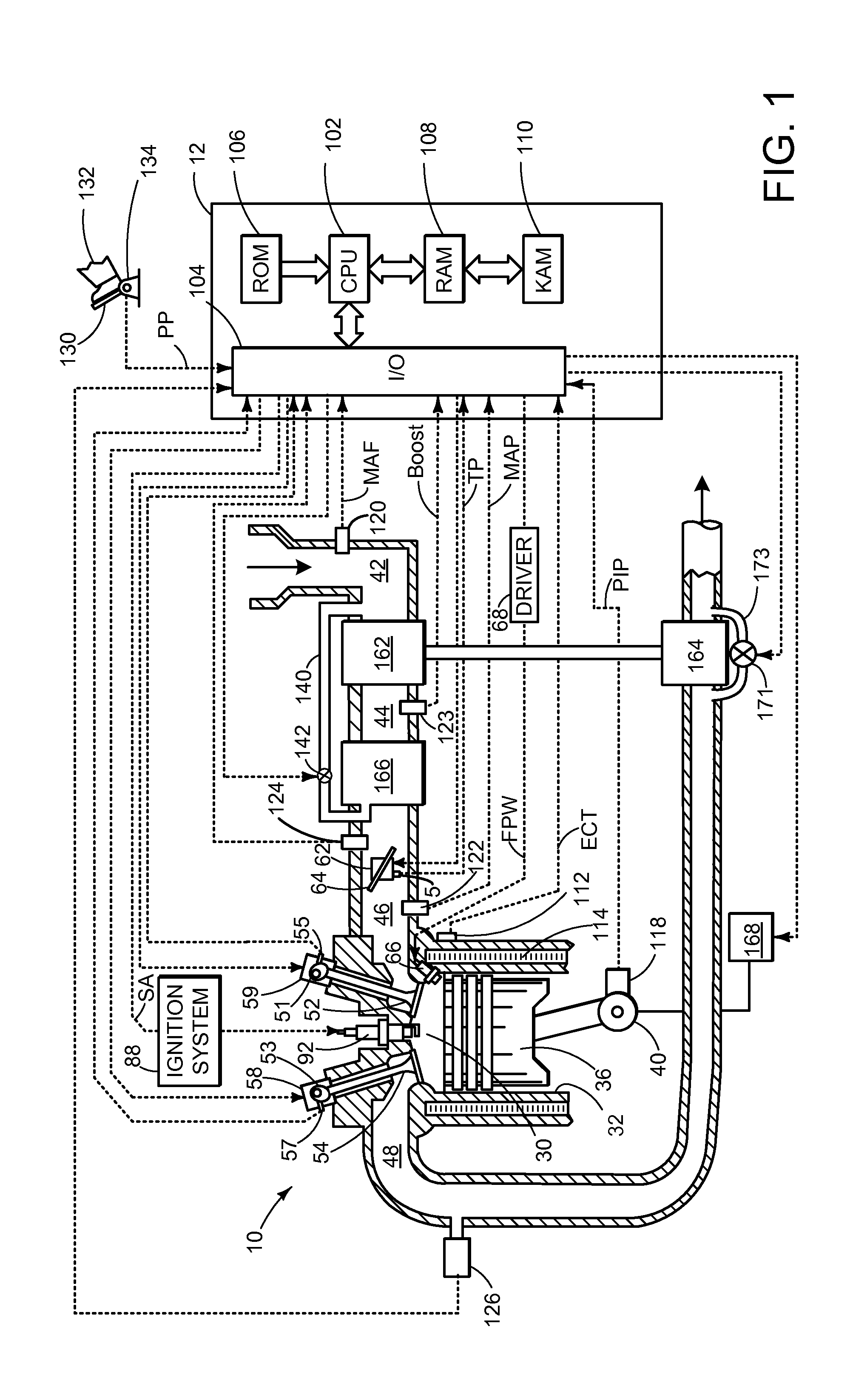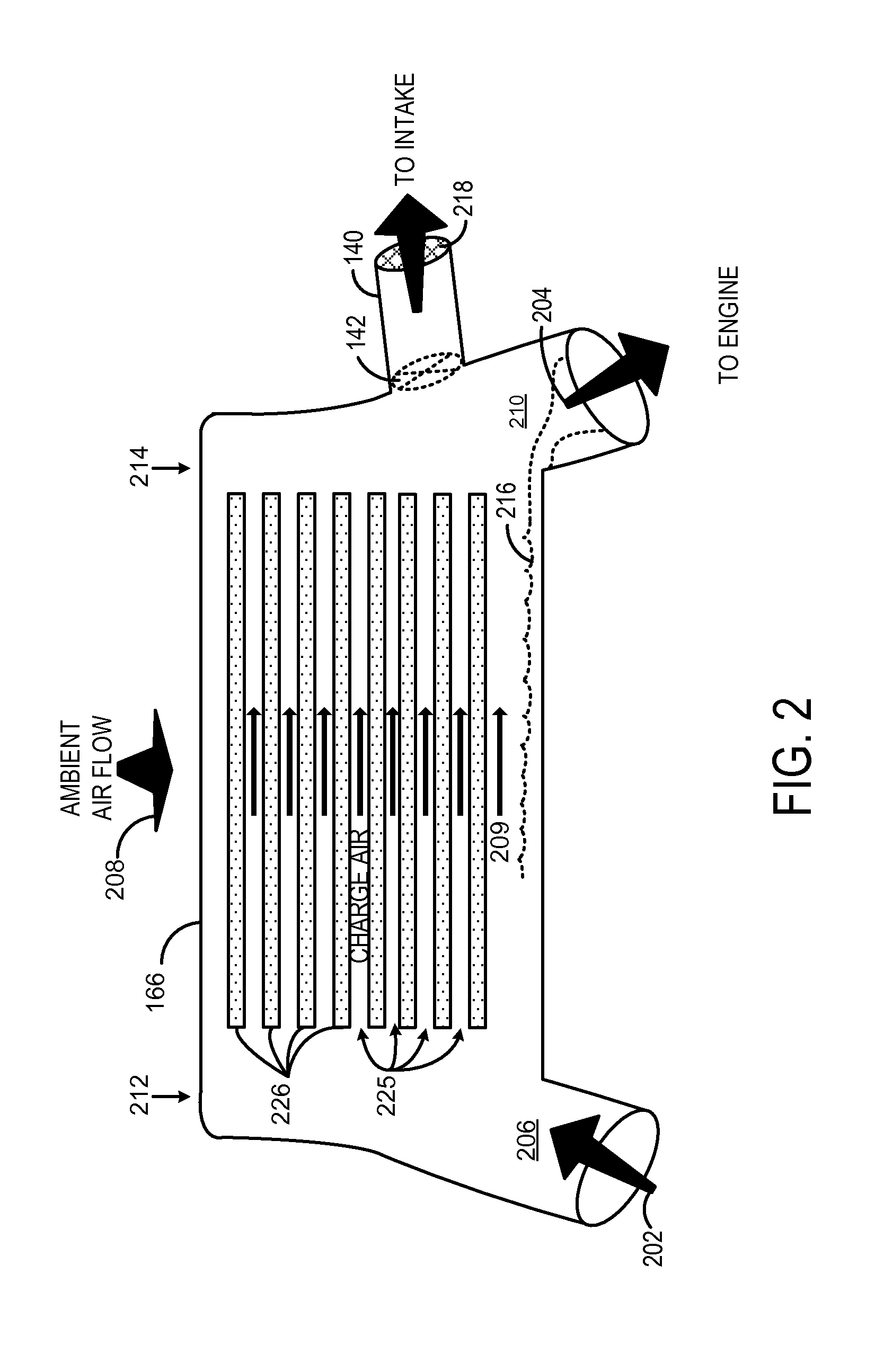Method for purging condensate from a charge air cooler
a technology of air cooler and condensate, which is applied in the direction of machine/engine, charge feed system, combustion engine, etc., can solve the problems of increasing the likelihood of engine misfire, engine misfire, condensate may still build up over time, etc., and achieves the effect of increasing air temperature, increasing density, and increasing power
- Summary
- Abstract
- Description
- Claims
- Application Information
AI Technical Summary
Benefits of technology
Problems solved by technology
Method used
Image
Examples
Embodiment Construction
[0012]During a standard engine drive cycle, engine air flow may be periodically raised for short durations, termed micro tip-ins, due to vehicle traversal of small hills, ambient air flow changes, vehicle acceleration, etc. These micro tip-ins may act to gradually remove condensate that has built up in an engine charge air cooler. However, under certain conditions, such as when the vehicle is driven over a flat surface, the micro tip-ins may not occur frequently enough to adequately remove the accumulated condensate. Thus, if engine air flow remains below a threshold for a given amount of time, a charge air cooler clean-out cycle may be initiated to actively remove the accumulated condensate.
[0013]The clean-out cycle may be performed by closing a turbocharger wastegate, thus increasing boost pressure and air flow through the charge air cooler. This increased air flow may gradually remove the condensate from the charge air cooler and direct the condensate to the engine in a controlle...
PUM
 Login to View More
Login to View More Abstract
Description
Claims
Application Information
 Login to View More
Login to View More - R&D
- Intellectual Property
- Life Sciences
- Materials
- Tech Scout
- Unparalleled Data Quality
- Higher Quality Content
- 60% Fewer Hallucinations
Browse by: Latest US Patents, China's latest patents, Technical Efficacy Thesaurus, Application Domain, Technology Topic, Popular Technical Reports.
© 2025 PatSnap. All rights reserved.Legal|Privacy policy|Modern Slavery Act Transparency Statement|Sitemap|About US| Contact US: help@patsnap.com



